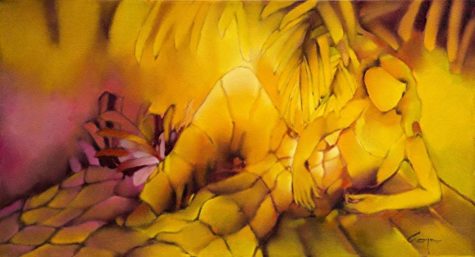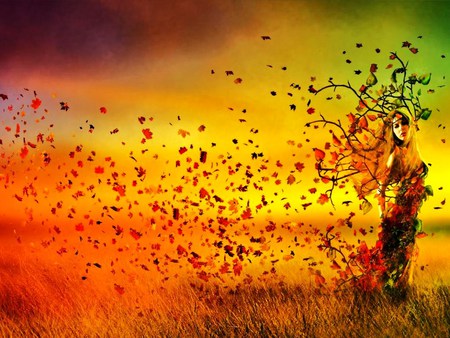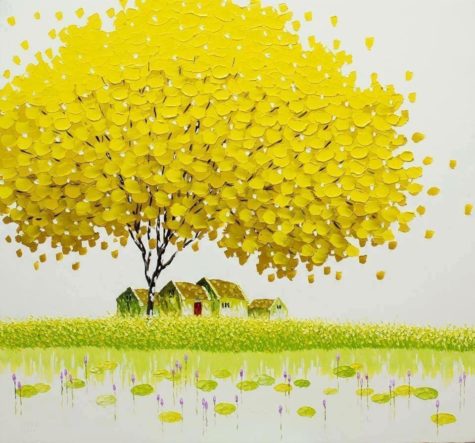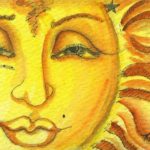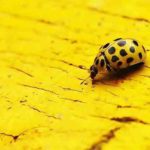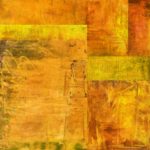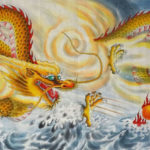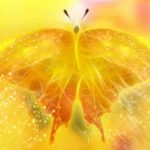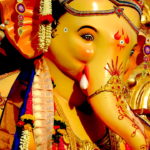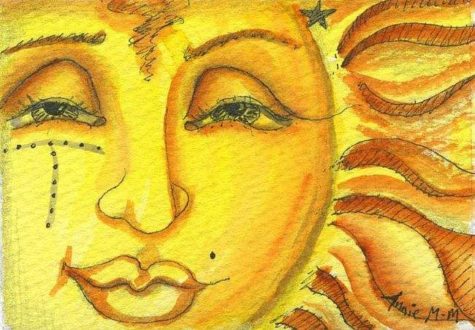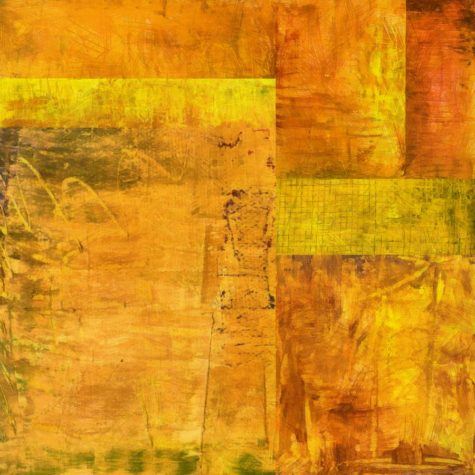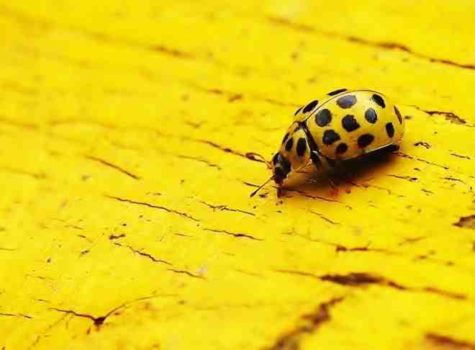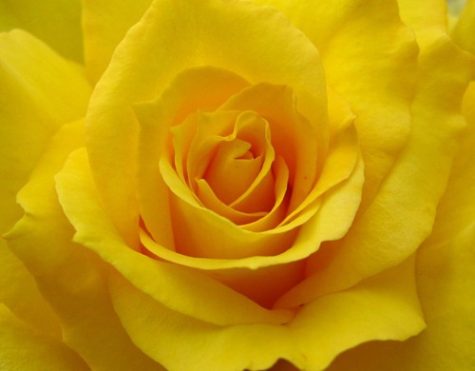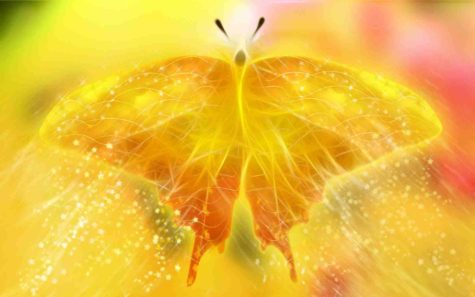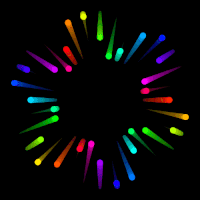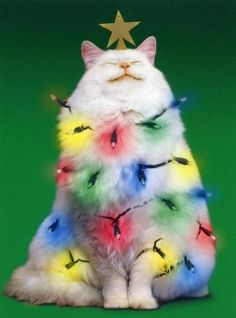Yellow
The Psychology of Yellow
Some of the key characteristics that are often associated with the color yellow include:
- Warmth:
Yellow is a bright color that is often described as warm.
- Difficult to read:
Yellow is also the most fatiguing to the eye due to the high amount of light that is reflected. Using yellow as a background on paper or computer monitors can lead to eyestrain or vision loss in extreme cases.
- Frustration:
Yellow can also create feelings of frustration and anger. While it is considered a cheerful color, people are more likely to lose their tempers in yellow rooms and babies tend to cry more in yellow rooms.
- Energetic:
As seen in the following quote, yellow is often perceived as being a high-energy color. It is often used in situations and products intended to create a sense of excitement or energy. It is bright and immediately grabs the eye. It can seem fresh, intense, overwhelming, or even brash and forceful in its energy. Yellow can also increase metabolism.
“Fully saturated yellow is only good for brief exposure, because its stimulating effect is so powerful that it can build up emotional energy quite quickly. I know that I would probably go nuts in a house with LEGO yellow walls. Though it should be noted that a less saturated yellow, such as that found in whipped vegetable spread (faux butter) is mildly pleasing and cheery.”
“Yellow makes me feel cheerful and energized. I love the bright sunny color and the way it makes me feel. I feel warm like summer. Perhaps sometimes startling, but then that is what energizes me.”
- Yellow Can Be Aggressive
While it can be an energetic color, this intensity can also have a downside. Sometimes yellow can come off as very aggressive and even confrontational. In great quantities, people may be left feeling irritated or even angry when surrounded by yellow.
“I agree that there is a level of aggression and frustration associated with yellow. The walls of my school are all yellow and since the new building opened, more fights have occurred in the hallways where there is the most amount of yellow. Also, some of the classrooms that have yellow in them seen to be associated with more frustrated students.”
“I find yellow to be a highly irritating color. When I’m in a yellow room, my agitation level increases whether I was in a good mood before I walked in it or not. One reason I believe I find it so annoying is that I’m an introvert and yellow is a very exposing and in your face type of color which are traits most introverts would naturally have an aversion to. Yellow is definitely an extrovert’s color.”
- Attention-grabbing:
Since yellow is the most visible color, it is also the most attention-getting color. Yellow can be used in small amount to draw notice, such as on traffic sign or advertisements.
- Yellow Is Cheerful
For many people, yellow is seen as a bright and cheerful color. Advertisers may use it to not only draw attention, but also to evoke a sense of happiness.
“I had a math class room that was painted bright yellow half way through the year. It completely changed the atmosphere and everyone’s grades seemed to go up. Our math teacher joked it must be the new paint job, but I entirely believed it was. It gave a cheery atmosphere and the lessons were far more light and enjoyable!”
“The color yellow exudes brightness, light, vitality, energy, optimism, willingness to grow and outshine. Sun stars sunflower are the objects that mostly are associated with the color yellow.”
- Yellow Is Complex
Of course, the effects of yellow can be highly varied and complex. Not everyone responds to this color in the same way. While some people might find it bright and cheery, others may find it grating and obnoxious. Some may associate it with a warm summer day, while to others it might be reminiscent of bad memories or associations.
“I like yellow. To me it’s a happy color associated with flowers and sunshine. But our kitchen is painted yellow and I find that my fiance who has a short temper almost always loses it in the kitchen. He also becomes much more impatient and argumentative. I have always suspected that it is the color of the walls. Guests also tend to eat their food faster at the kitchen table than when we entertain in the dining room (white) or outside.”
- How does yellow make you feel?
- Do you associate yellow with certain qualities or situations?
While the color yellow can evoke a lot of different psychological reactions, it is important to remember that these responses are often unique to the individuals. Some responses, such as the tendency to find yellow difficult to read, are more universal. Other associations are often cultural and even specific to each person thanks to differing backgrounds and experiences.
From: Very Well Mind
Chase Away The Winter Blues
Do you experience winter blues? An effective way to change your moody outlook is to brighten up your life with color. Research has proven that color therapy, or chromo therapy, is a natural way to lift your spirits. In particular, the following colors have power to lift the spirit, combat cabin fever and chase away those winter blues.
- Yellow
Yellow captures the joy of sunshine, communicates happiness and stimulates your mind. It helps to reduce depression, giving one a sense of hope, reminding us that spring is just around the corner. It is important to expose yourself to morning sunlight as early as you can.
- Orange
Orange evokes excitement, enthusiasm and is an energetic color. It is joyful, playful, creative, and social color.
- Red
Red stimulates the body metabolism, and encourages one to engage in activity. The color red fights depression and gives one the energy to get up and do something.
Chase away the winter blues by introducing these powerful colors in your apparel, food you eat, and your home environment. So hurrah for Yellow, Orange, and Red.
Source: Balanced Women’s Blog
The Yellow Gallery
Yellow In Media And Design
Some of the ways the color yellow is used in the media and for design purposes:
- Yellow is often associated with food.
- Bright, pure yellow is an attention grabber that’s why taxicabs are painted this color.
- Yellow is seen before other colors when placed against black; this combination is often used to issue a warning.
- Use yellow to evoke pleasant, cheerful feelings.
- Yellow is very effective for attracting attention, so use it to highlight the most important elements of your design.
- Men usually perceive yellow as a very lighthearted, ‘kiddish’ color, so it is not recommended to use yellow when selling prestigious, expensive products to men – nobody will buy a yellow business suit or a yellow Mercedes.
- Yellow is an unstable and spontaneous color, so avoid using yellow if you want to suggest stability and safety.
- Light yellow tends to disappear into white, so it usually needs a dark color to highlight it.
- Shades of yellow are visually unappealing because they loose cheerfulness and become dingy.
Submitted by Raetta Parker
Yellow – In Depth
The sound of colors is so definite that it would be hard to find anyone who would express bright yellow with bass notes or dark lake with treble… ~Wassily Kandinsky
The word “yellow” comes from the Old English geolu, geolwe, meaning “yellow, yellowish”, derived from the Proto-Germanic word gelwaz. It has the same Indo-European base, –ghel, as the word yell; –ghel means both bright and gleaming, and to cry out. Yellow is a color which cries out for attention.
The English term is related to other Germanic words for yellow, namely Scots yella, East Frisian jeel, West Frisian giel, Dutch geel, German gelb, and Swedish gul.
According to the Oxford English Dictionary, the oldest known use of this word in English is from The Epinal Glossary in the year 700.
In Ancient Egypt, yellow was associated with gold, which was considered to be imperishable, eternal and indestructible. The skin and bones of the gods were believed to be made of gold.
The Egyptians used yellow extensively in tomb paintings; they usually used either yellow ochre or the brilliant orpiment, though it was made of arsenic and was highly toxic. A small paintbox with orpiment pigment was found in the tomb of King Tutankhamun. Men were always shown with brown faces, women with yellow ochre or gold faces.
The Dark Side of Yellow
Yellow is the only color that reacts badly to black: Add a little black and it becomes a sickly yellow-green.
In some cultures and situations, the color yellow represents cowardice, betrayal, egoism, and madness. Furthermore, yellow is the color of caution and physical illness (jaundice, malaria, and pestilence). Perhaps it’s no coincidence that the sources of yellow pigments are toxic metals – cadmium, lead, and chrome – and urine.
The original formula for Indian yellow, the bright yellow long used in Indian miniatures was banned due to the way it was made. Cows were poisoned with mango leaves and the color was made from their urine.
In Russia, a colloquial expression for an insane asylum used to be “yellow house.” Bright “marigold” yellow may be associated with death in some areas of Mexico. Those condemned to die during the Inquisition wore yellow as a sign of treason.
A yellow patch was used to label Jews in the Middle Ages. European Jews were forced to wear yellow or yellow “Stars of David” during the Nazi era of prosecution.
Interestingly, in China, adult movies are referred to as yellow movies.
Seeing Yellow:
Although yellow occupies one-twentieth of the spectrum, it is the brightest color, the most luminous of all the colors. It’s the color that captures our attention more than any other color.
In the natural world, yellow is the color of sunflowers and daffodils, egg yolks and lemons, canaries and bees. In our contemporary human-made world, yellow is the color of Sponge Bob, the Tour de France winner’s jersey, happy faces, post its, and signs that alert us to danger or caution.
Spectral coordinates:
- Wavelength: 570-590 nm
- Frequency: 525-505 THz
Color coordinates:
- Hex triplet: #FFFF00
- sRGBB: (255, 255, 0)
- CMYKH: (0, 0, 100, 0)
Note: This post was compiled by Shirley Twofeathers for Color Therapy, you may repost and share without karmic repercussions, but only if you give me credit and a link back to this website. Blessed be.
Using The Color Yellow
You put a blob of yellow here, and another at the further edge of the canvas: straight away a rapport is established between them. Colour acts in the way that music does… ~Georges Braque
Wearing Yellow:
Wear yellow to present a cheery, uplifting effect. Use it around your office to help keep a clear your mind, and improve memory and decision making.
Put yellow in your life when there is:
- Confusion and indecision, poor memory.
- Fear and anxiety caused by unknown factors leading to nervous and digestive disorders.
- Nervous exhaustion, nervous breakdown, “burn out,” panic attacks, hot flashes.
- Poor memory, inability to concentrate or study.
- Tendency to SAD, or lethargy and depression in dull weather.
- Irritability, tension, restlessness, feelings of depression and inability to make decisions.
Questions to ask yourself when drawn to yellow:
- Is there a need to start thinking clearly?
- What are you afraid of?
Loving Yellow:
Watch out for self-centered, “me first” energy when someone prefers yellow to the rest of the rainbow. If yellow is your favorite color, temper your use of the word “I” when you’re interested in someone else. You can come across as too ego-centric otherwise. Now, if you’re dating someone whose favorite hue is yellow, make sure to jump in and share stories about yourself, since this person may not give you much room.
Yellow is the color of cheerfulness, curiosity, alternation, flexibility, progress, amusement, contact through traveling and communication, learning and practical knowledge. People of high intellect favor yellow. A person who loves yellow may have a feeling for writing and speaking.
Not loving yellow:
A person who has aversion to yellow may be emotionally disappointed and bitter. May have tendency to rationalize feelings, or to avoid the depth of life by often changing relationships, many superficial relationships and/or constant changing activities.
Note: This post was compiled by Shirley Twofeathers for Color Therapy, you may repost and share without karmic repercussions, but only if you give me credit and a link back to this website. Blessed be.
Variations of the Color Yellow
“The yellow glistens.
It glistens with various yellows,
Citrons, oranges and greens
Flowering over the skin.”
― Wallace Stevens
Light Clear Yellow: This color helps to clear the mind, making it open and alert.
Lemon Yellow: Lemon yellow promotes self reliance and a need for an orderly life. This yellow increases our sensitivity to criticism.
Citrine Yellow: Citrine is a superficial and fickle color. It encourages the serial relationship hopper, the teaser, with unstable emotions. This yellow can be deceitful and retreats from responsibility.
Golden Yellow: This yellow is the color of the loner with an intense curiosity and interest in investigating the finer details of its interests. Golden yellow is sensitive to criticism.
Light Cream: Tinted with a hint of yellow, encourages new ideas. However, this very pale color can also indicate a lack of confidence and a need for reassurance.
Dark Yellow: The darker shades of yellow indicate an inclination toward depression and melancholy, lack of love and low self-worth. Dark yellow relates to the constant complainer and the cynic.
Gold: Gold is the color of success, achievement and triumph. Associated with abundance and prosperity, luxury and quality, prestige and sophistication, value and elegance, the color psychology of gold implies affluence, material wealth and extravagance.
Note: This post was compiled by Shirley Twofeathers for Color Therapy, you may repost and share without karmic repercussions, but only if you give me credit and a link back to this website. Blessed be.
Yellow – The Correspondences
How lovely yellow is! It stands for the sun.
~Vincent Van Gogh
Foods that work in a yellow way:
- Eating outside in natural sunlight improves digestion and gives a feeling of well being.
- Fish oils and foods that are high in omega 3 fatty acids.
- Lemon, bananas, grapefruit, eggs, honey, peppers, pumpkins, pineapples, bananas, grains such as corn, wheat, rice, rye
Vitamins and supplements that work in a yellow way:
- Vitamins A, B, D, and E
- Sodium and potassium, iodine, chromium, molybdenium.
Yellow essential oils:
- Lemon
- Lemon grass
- Lemon Verbena
Yellow crystals and stones:
- Topaz
- Beryl
- Citrine
- Amber
- Tiger Eye
- Iron Pyrite
Carry or wear yellow gemstones to promote the ability to express yourself. They are excellent stones for writers and public speakers to increase eloquence. The yellow stones stimulate movement and mental awareness. They are used to enhance decision making skills.
Symbolic meanings of the color yellow:
- The sun
- Power
- Authority
- The intellect and intuition
- Goodness
- Light
- Life
- Truth
- Immortality
- Endurance,
- The Empire and fertility (in China)
- Cowardice
- Treachery.
Healing With The Color Yellow
Whenever the pressure of our complex city life thins my blood and numbs my brain, I seek relief in the trail; and when I hear the coyote wailing to the yellow dawn, my cares fall from me. I am happy. ~Hamlin Garland
Overview:
Yellow is associated with the solar plexus chakra. Yellow activates the motor nerves. It generates energy for the muscles. Disturbance in the supply of yellow energy to any part of the body can cause disturbance of function in that area including partial or complete paralysis from the deficiency of sensory and/or motor energy. Its complement is violet.
Yellow activates the motor nerves. It generates energy for the muscles. Disturbance in the supply of yellow energy to any part of the body can cause disturbance of function in that area including partial or complete paralysis from the deficiency of sensory and/or motor energy.
Yellow is a mixture of red and green rays. It has half the stimulating potency of red and half the reparative potency of the green. Hence, it tends both to stimulate function and to repair damaged cells. Yellow light directed at the intestinal tract for short periods is a digestant. For longer periods, it acts both as catharsis and as a cathartic. It also stimulates the flow of bile and has an anthelmintic action (antagonistic to parasites and worms).
Yellow predominantly affects the solar plexus chakra, and it is stimulating to the mental faculties of the individual. It can be used for depression. It helps awaken an enthusiasm for life. It awakens greater confidence and optimism. It is also effective in the treatment of digestive problems. It is beneficial to the stomach, the intestines, the bladder, and the entire eliminative system as well. It is very effective in the treatment of most headaches. It helps to balance the gastrointestinal tract.
Healing with the color yellow:
- Use yellow for a weak and confused immune system – frequent minor illnesses, intolerance’s and allergies to foods and other substances.
- Digestive problems, inefficient absorption of nutrients.
- Yellow is used to treat dermatitis and other skin problems.
- It activates the motor nerves. It affects the nervous system, good for nervous exhaustion.
- Yellow can be used for conditions of the stomach, liver, and intestines. Speeds up the digestion and assimilation, and the stool.
- Use it for digestive disorders, gas, food allergies, liver problems, diabetes, hypoglycemia, hyperthyroid, gallstones, muscle cramps, nervous disorders, depression, exhaustion and breathing problems, lymphatic problems, dispelling fears, building bones.
- Yellow also speeds metabolism.
- Yellow helps strengthen the nerves and the mind. It helps awaken mental inspiration and stimulates higher mentality. Thus, it is an excellent color for nervous or nerve-related conditions or ailments.
- Yellow energizes the muscles.
- Dark yellow soothes pains in the nerves (shooting pains).
- Yellow also helps the pores of the skin and aids scarred tissue in healing itself.
- Yellow affects the digestive system, gastrointestinal tract, adrenal activity and the left hemisphere brain activity.
Contra-Indications:
- In healing, yellow must be used carefully because it is highly stimulating and can cause exhaustion and depression if overused.
- Intense yellow is the color that is most stressful for the eyes. The amount of light that is reflected by this bright color results in over stimulation of the eyes; it can actually cause eye irritation.
- Bright yellow rooms are often too intense. People may become irritated and nervous in a yellow room, children may have trouble sleeping and babies may cry more.
- Do not use yellow for nervous breakdowns, use blue or green.
- Do not use yellow if you are suffering from acute inflammation, delirium, diarrhea, fever, neuralgia, over-excitement, palpitation of the heart.
- Excessive amounts or exposures to yellow may make one superficial or hyperactive. It should be balanced with colors from the blue spectrum.
Note: This post was compiled by Shirley Twofeathers for Color Therapy, you may repost and share without karmic repercussions, but only if you give me credit and a link back to this website. Blessed be.
The Color Yellow
I really just want to be warm yellow light
that pours over everyone I love. ~Conor Oberst
Yellow is the color of gold, butter, and ripe lemons. Yellow is commonly associated with gold, wealth, sunshine, reason, happiness, optimism and pleasure, but also with cowardice, envy, jealousy and betrayal. It plays an important part in Asian culture, particularly in China.
Yellow enriches, stimulates, lightens and activates many of the systems of the body. It tends to encourage orderliness and clarity. It can act as a mild sedative to relieve many fears and give a mental lift. Gradual and consistent exposure to yellow light decreases blood pressure and heart rate and increases energy and endurance.
Yellow is the color of the mind and the intellect, vitality, power and ego. It is optimistic and cheerful, however it can also suggest impatience, criticism, and cowardice.
Yellow links with and stimulates the solar plexus, or psychic center (the third chakra). It can be used for psychic burnout or other psychic-related conditions or ailments. Activates and cheers up depressed and melancholic people. Gives lust for life.
Yellow is a very favorable vibration for mental or intellectual activity, as it promotes a clear state of mind. Yellow heightens your awareness and alleviates depression, sadness, or any kind of despondency. When studying, having objects of lemon yellow around will help the memory functions of the brain. If exam-stress is a problem, a bright golden yellow encourages relaxation and reduces nervousness.
Note: This post was compiled by Shirley Twofeathers for Color Therapy, you may repost and share without karmic repercussions, but only if you give me credit and a link back to this website. Blessed be.
